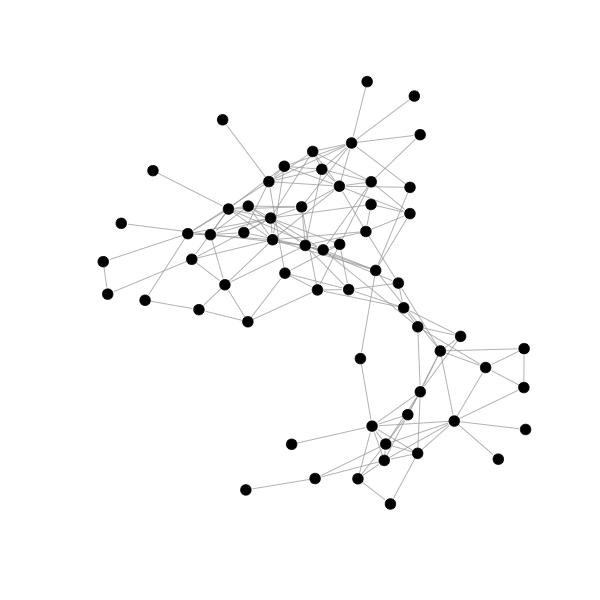
The dolphin social network. Fruchterman-Reingold layout.
Bottlenose dolphins, the genus Tursiops, are the most common and well-known members of the family Delphinidae, the family of oceanic dolphins. Doubtful Sound is a very large and naturally imposing fiord in Fiordland, in the far south west of New Zealand. Doubtful Sound was named 'Doubtful Harbour' in 1770 by Captain Cook, who did not enter the inlet as he was uncertain whether it was navigable under sail. It was later renamed Doubtful Sound by whalers and sealers. The fiord is home to one of the southernmost population of bottlenose dolphins. The Doubtful Sound bottlenoses have formed a very insular sub-group of only about 70 individuals, with none having been observed to leave or enter the Sound during a multi-year monitoring regime. Their social grouping is thus extremely close, which is also partly attributed to the difficult and unusual features of their habitat, which is much colder than for other bottlenose groups and is also overlaid by the freshwater layer.
David Lusseau, a researcher at the University of Aberdeen, observed the group of dolphins of Doubtful Sound. Every time a school of dolphins was encountered in the fjord between 1995 and 2001, each adult member of the school was photographed and identified from natural markings on the dorsal fin. This information was utilised to determine how often two individuals were seen together. Lusseau defined social acquaintances in the network as preferred companionships, that is individuals that were seen together more often than expected by chance. He then built a social network with 62 dolphins and 159 undirected ties representing preferred companionships. In the dolphin network, the sex of dolphins was known for all but four individuals from direct observations of genitalia using an underwater camera.
In the following we provide some visualizations of the dolphin social network obtained using the R package igraph.

The dolphin social network. Fruchterman-Reingold layout.

The social network with names of dolphins.
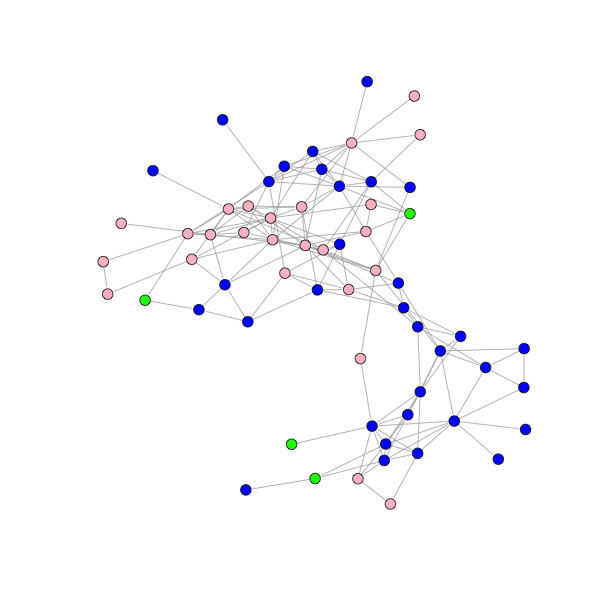
The dolphin social network with sex: pink (female), blue (male), green (unknown). Most of the links (70%) connect dolphins of the same sex.
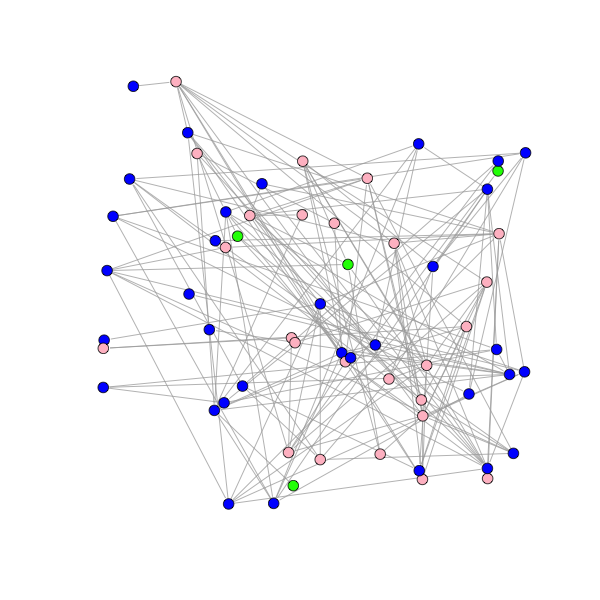
The dolphin social network. Random layout.
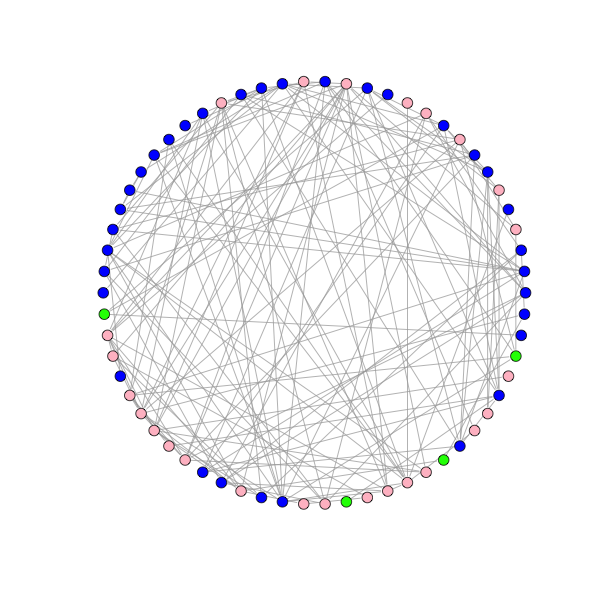
The dolphin social network. Circle layout.

The dolphin social network. Tree-like layout.

The male network.

The female network.
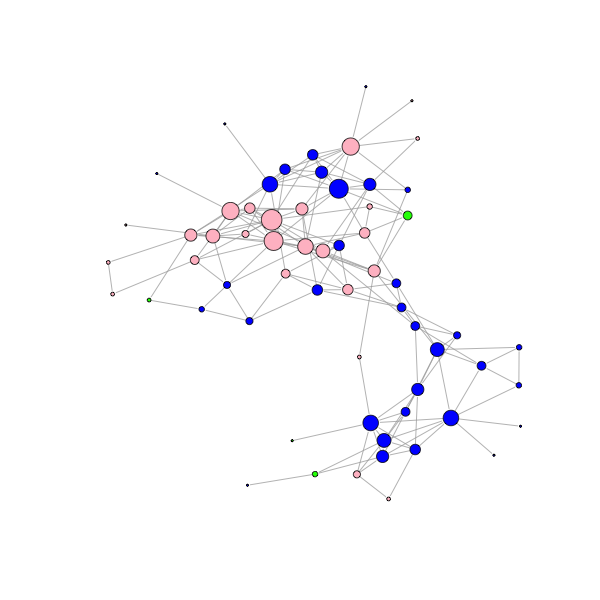
The dolphin social network where the size of each node is proportional to its degree centrality (male/female average degree: 5.1/5.6).

The dolphin social network where the size of each node is proportional to its eigenvector centrality (male/female average degree: 0.21/0.42).
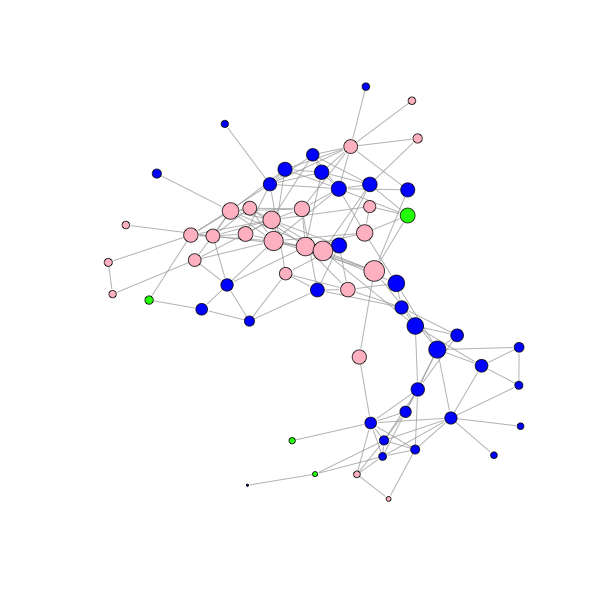
The dolphin social network where the size of each node is proportional to its closeness centrality (male/female average degree: 0.30/0.32).
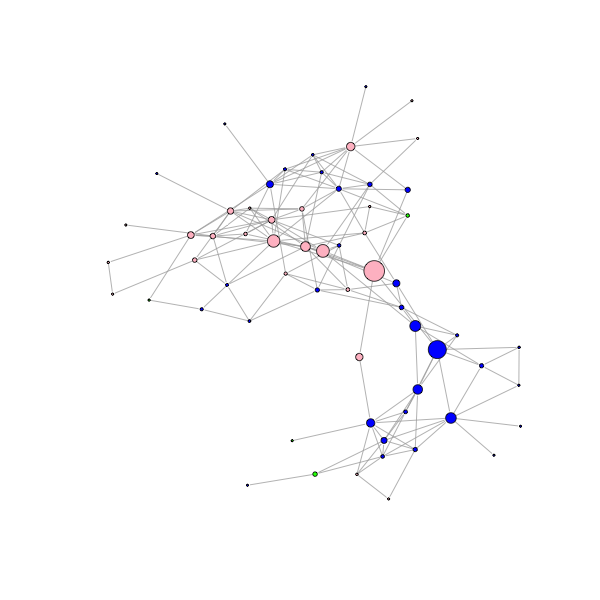
The dolphin social network where the size of each node is proportional to its betweenness centrality (male/female average degree: 67/86).

Effectiveness of different percolation strategies with respect to connectivity of the network.

Cohesive groups of nodes: the deeper in the tree on the right, the higher the cohesiveness of the nodes with the corresponding color. Square nodes are males, circle nodes are females, rectangular nodes are unknown sex.
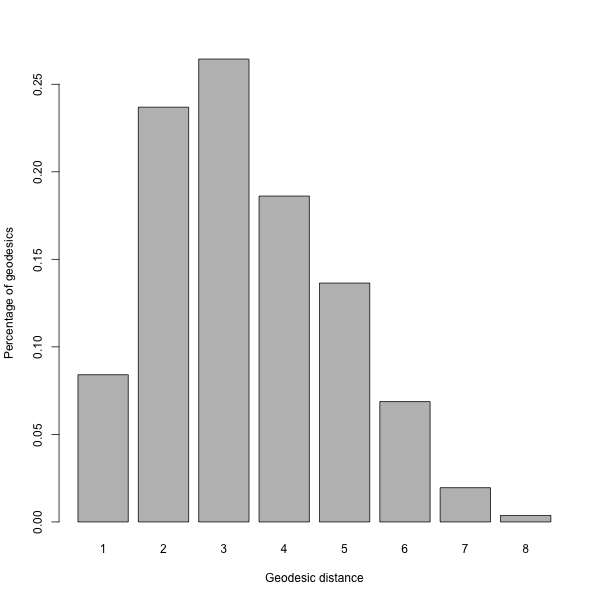
Histogram of distances among dolphins on the network. On average, two dolphins in the network are separated by 3 links, and the maximum distance among two dolphins is 8 links.
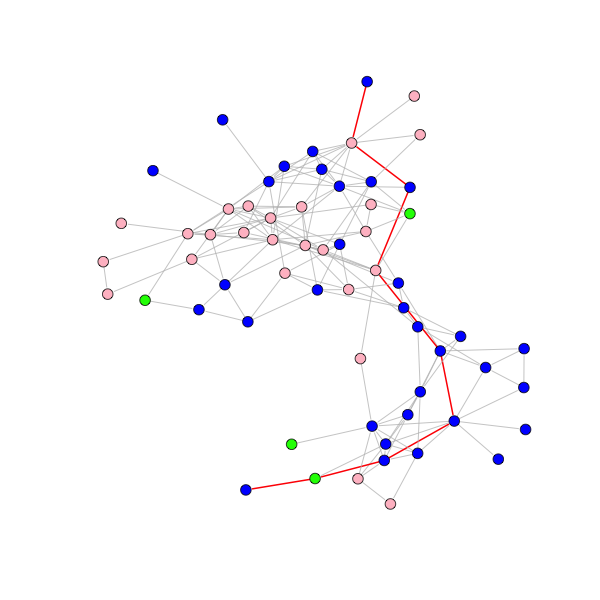
The dolphin network with the diameter (the longest shortest path) highlighted in red. The diameter is 8 edges long.